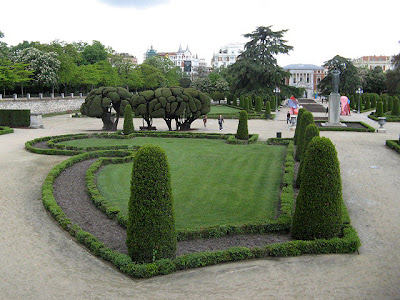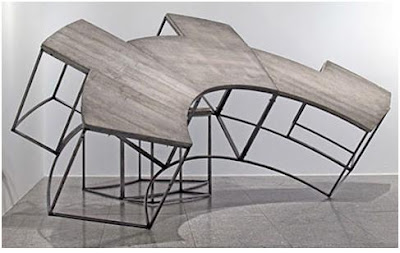I can now without incident brag that I've been to the two Toledo's. The first being the Midwest swing-state of Ohio home to the Anthony Wayne Trail, Beirut Bakery, Maumee River, and punk band The Necros. The second marked off the list has seen a little bit more history and sits on a hill about a 30-minute train ride (70 km) south of Madrid. We secretly have a knack for ending up at tourist destinations on national or religious holidays (as in when things are closed), but the advantage is you get the entire town to yourself.
 |
| Toledo's advantage is Rio Tajo (Tagus River), a natural buffer to keep invading armies out. Across the Tagus sits Castillo de San Servando. |
 | ||
Ana standing at the door of Catedral de Toledo. As luck would have it we entered in the middle of mass and immediatly left.
|
 |
| The streets are narrow with mirrors placed at various intersections to keep cars from crashing into each other. |
 |
| Dear Ian MacKay, see the influence a Minor Threat song had on Toledo, Spain. The score is Minor Threat: 1 The Necros: IQ 32 |
 |
| El Greco's garden. |
 |
| Another filler shot of Rio Tajo, looks like a prime tubing spot. |
 |
| I will be opening my pizza/brew pub in this building in 2013. Hope to see you there! |
 |
| Puente de Alcantara is an arch bridge built by the Romans (or their slaves). |
 |
| The highway the Moors took when they invaded Toledo. |
 |
| The Pope watching over Ana. |
 |
| Straight Edge has caught-on but Street Art has yet to. |





















































